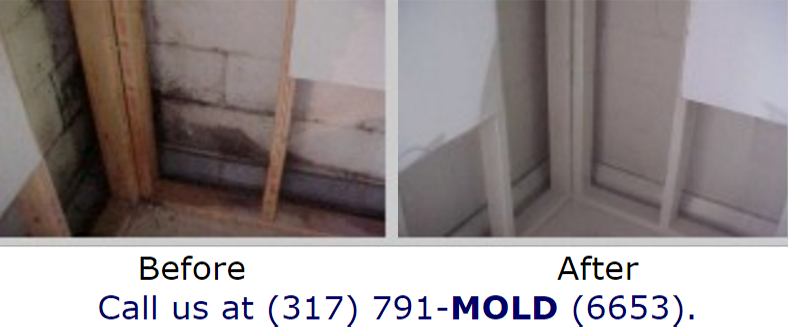Lead/Mold
Lead
Abatement of lead based paint hazards using mechanical and chemical stripping, abrasive and nonabrasive blasting/cleaning techniques at commercial properties and for historical renovations. We also handle other lead hazards such as x-ray room lining removal at medical facility renovations
Mold
We specialize in Mold Remediation using our extensive background in asbestos/lead abatement and state of the art techniques to rid this health menace from residential and commercial properties.

About Mold
There are more than 100,000 species of mold. Molds are microscopic organisms, present virtually everywhere, indoors and outdoors. For molds to grow and reproduce, they need only a food source (organic material, wood, paper, etc.) and moisture. Mold growth will appear on surfaces as discoloration, (green, gray, brown, black, white and other colors) and they release countless tiny, lightweight spores, which can become airborne.
Can mold become a problem in my home?
Molds usually appear because of excessive moisture in a residence or commercial building. The moisture is often a result of construction defects or maintenance problems such as a leaking window or roofs, failed sealant joints, inadequate or missing flashing, leaking pipes, cracks in siding, poorly designed HVAC systems, and the list goes on. Mold can grow on materials with high cellulose content such as drywall, ceiling tiles and wood that become chronically moist or water-damaged due to excessive humidity, water leaks, condensation, or flooding. Persons exposed to high spore levels can become sensitized and develop allergies to the mold or other health problems.
Health Effects
For some people, a relatively small number of mold spores can trigger an asthma attack or lead to other health problems. Some types of mold may cause respiratory problems, nasal and sinus congestion, eye irritation, cough, nose or throat irritation, headache, or fatigue. For other persons, symptoms may occur only when exposure levels are much higher. Basically, if you can see or smell (musty order) mold inside your home, take steps to identify and eliminate the excess moisture and to cleanup and remove the mold.
Greater risk to exposure:
- Individuals with existing respiratory conditions (allergies, asthma, etc.)
- Persons with weakened immune system
- Infants and young children
- Elderly
Leave it to the experts
DELTA Services, Inc. will identify and assess the magnitude and area of mold contamination. Depending on the severity of the contamination, we have developed a highly specialized mold remediation process that addresses every unique situation of contamination to structures and its contents. DELTA Services, Inc. will develop a remediation plan detailing the protocol and scope and perform clearance testing upon the customers request. Personal and/or business belongings that can be cleaned and restored are itemized and removed. Let our technicians trained in the latest technologies and procedures solve your indoor air quality issues.
Current Regulation:
There are no Federal or State standards for what levels of exposure to molds present significant health risks. There are no Federal standards for mold though the EPA published a guideline for remediating mold in schools and commercial buildings (see resource link). New York City has established guidelines for assessing and remediating mold (see resource link).
Conclusion:
We specialize in mold remediation using our extensive background in asbestos/lead abatement and state of the art techniques to rid this health menace from residential and commercial properties. DELTA Services, Inc. will remain diligent on training and remediation procedures, along with staying current with Federal and State mold related legislation.
Call us at (317) 791-MOLD (6653).
Mold FAQ’s
Mold (fungi) is present everywhere – indoors and outdoors. There are more than 100,000 species of mold. At least 1,000 species of mold are common in the US. Some of the most commonly found are species of Cladosporium, Penecillium, and Aspergillis. Mold is most likely to grow where there is water or dampness – such as in bathrooms and basements.
Most types of mold that are routinely encountered are not hazardous to healthy individuals. However, too much exposure to mold may cause or worsen conditions such as asthma, hay fever, or other allergies. The most common symptoms of overexposure are cough, congestion, runny nose, eye irritation, and aggravation of asthma. Depending on the amount of exposure and a person’s individual vulnerability, more serious health effects – such as fevers and breathing problems – can occur but are unusual.
Typically, indoor air levels of Stachybotrys are low; however, as with other types of mold, at higher levels health effects can occur. These include allergic rhinitis (cold-like symptoms), dermatitis (rashes), sinusitis, conjunctivitis, and aggravation of asthma. Some related symptoms are more general – such as inability to concentrate and fatigue. Usually, symptoms disappear after the contamination is removed.
There has been some evidence linking Stachybotrys with pulmonary hemosiderosis in infants who are generally less than six months old. Pulmonary hemosiderosis is an uncommon condition that results from bleeding in the lungs. In studied cases of pulmonary hemosiderosis, the exposure of Stachybotrys came from highly contaminated dwellings, where the infants were continually exposed over a long period of time.
Mold should be cleaned as soon as it appears. Persons cleaning mold should be free of symptoms and allergies. Small areas of mold should be cleaned using a detergent/soapy solution or an appropriate household cleaner. Gloves should be worn during cleaning. The cleaned area should then be thoroughly dried. Dispose of any sponges or rags used to clean mold.
If the mold returns quickly or spreads, it may indicate an underlying problem such as a leak. Any underlying water problems must be fixed to successfully eliminate mold problems. If mold contamination is extensive, call DELTA Services, Inc. for a professional consultation.
